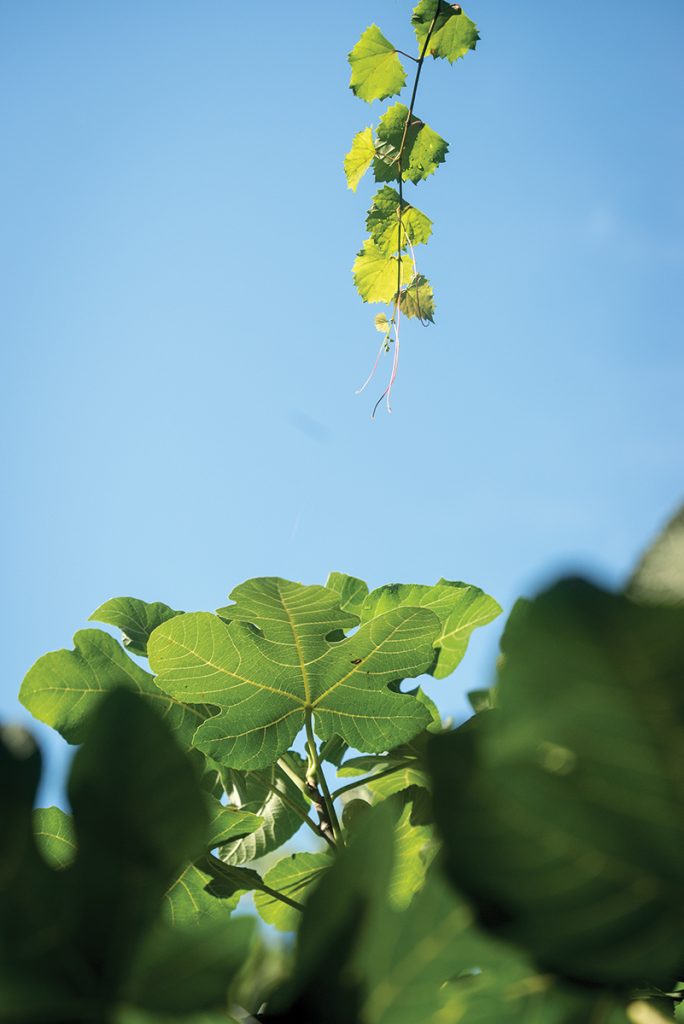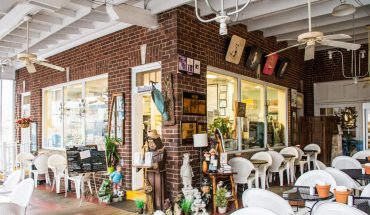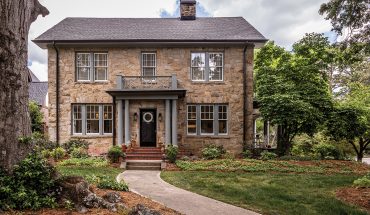Over two decades, this wooded lot has been transformed with gravel pathways, sun and shade plantings, and unique artwork made from old farm tools.
by Ayn-Monique Klahre | photography by Kate Medley
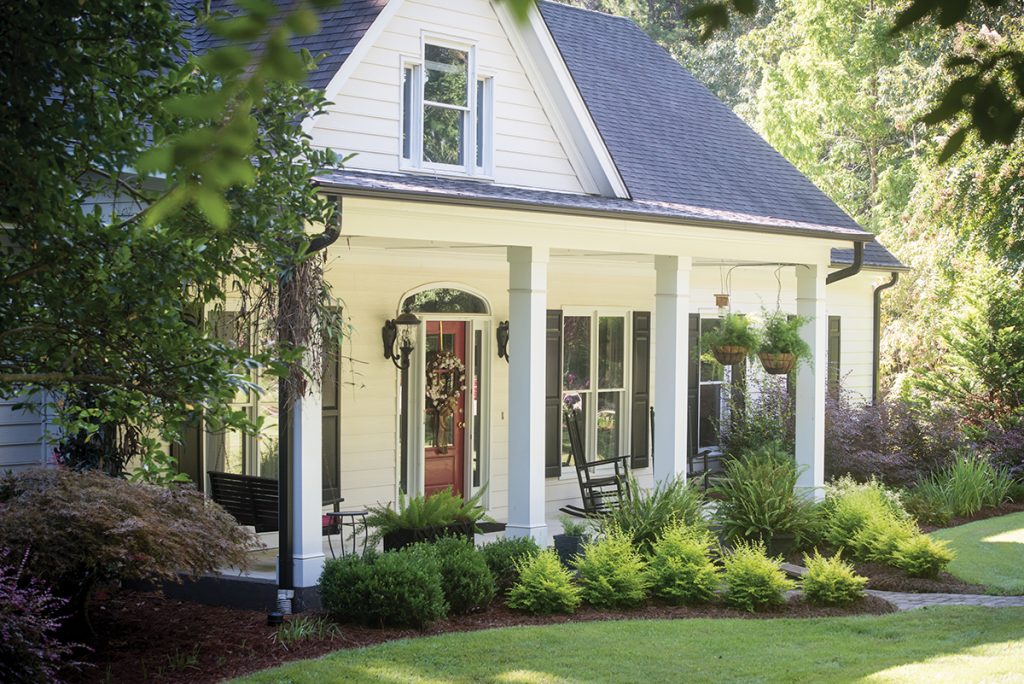
Effie Underwood’s garden combines the brain of an engineer with the ethos of a farm. “My dad and all of his family are dirt people — ingrained, forever farmers. I was born with that as well,” she says.
Underwood grew up in the low country of South Carolina and attended a small women’s college there. She started out studying art but switched to a math major when she realized that it would lead to more career opportunities. “So I guess I have both the figure-it-out mentality and the creative piece,” she says.
Underwood moved to Raleigh in the 1980s and worked for a long time as an engineer for AT&T. She took a buyout in the early 2000s and ran her own garden business for about a decade, then went back to work as an engineer.
During her hiatus from engineering, “I took all the garden stuff I could find,” she says, including classes through organizations like Duke Gardens and the JC Raulston Arboretum; she also joined Wake County’s Master Gardener program. “I wanted to learn from all these community resources to better understand and do more with my passion for plants,” she says.
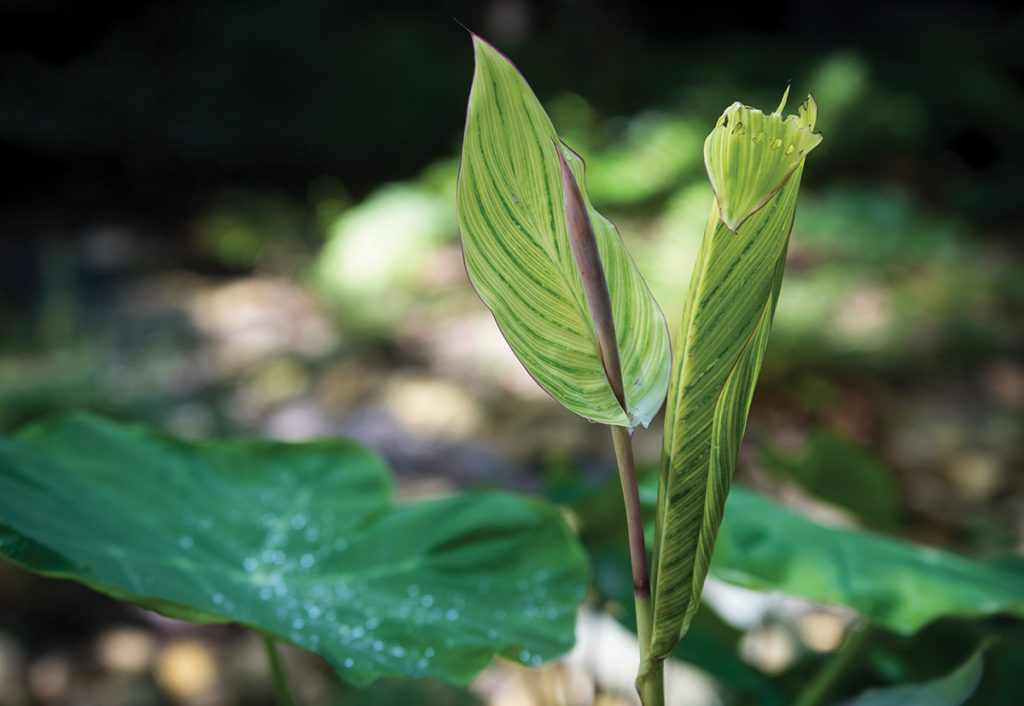
On her 2.5-acre plot in North Raleigh, off Six Forks Road, she’s been working on a garden for more than 15 years. The home was about 10 years old when she moved in, and the mostly wooded yard had been cleared “just enough to build the house.” From the beginning, Underwood approached her garden from an engineer’s analytical framework. “I don’t come up with a plan — I gather my facts, then let Mother Nature present the plan to me,” she says.
Starting with a loose vision for the yard, over time she has created areas for grassy lawns, ornamental plants and pathways to connect them. “While I have a basic plan, within its components that garden is more free and random,” she says. “I’ve segmented the gardens into shade, sun, wet and dry, and from there, I fit in the plants that work best.”
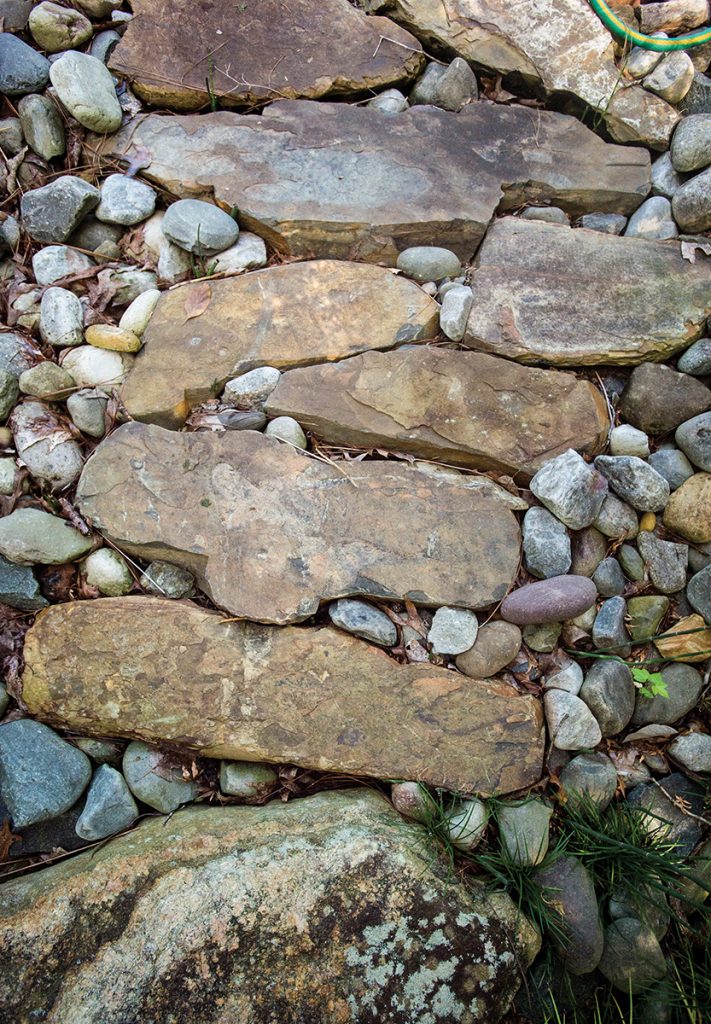
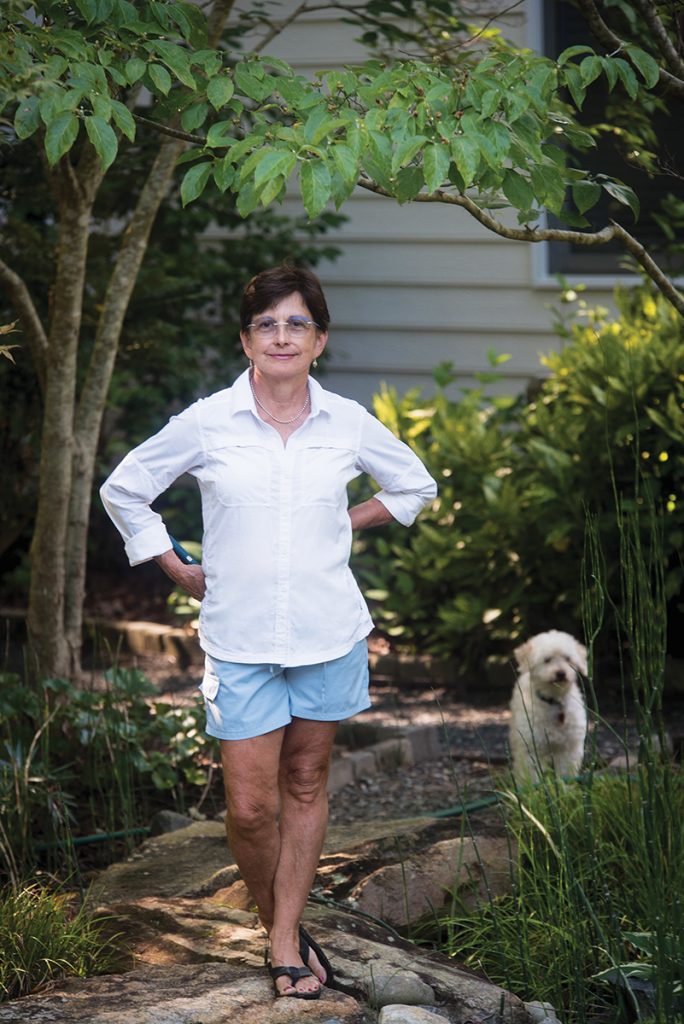
Today, her garden incorporates “almost any flower you can name” including canna lilies, Cone flowers and impatiens; many fruit trees (figs, persimmons and blueberries among them); and colorful foliage like Jazz Hands loropetalum, coleus, hostas, elephant ears, ornamental ginger and caladium. “It’s always a work in progress,” says Underwood. “To me, the most important thing is to put the right plant in the right place — it should not be a struggle to get a plant to survive.”
Turning off of Six Forks, a driveway leads to the home, with an open area to the left and gravel paths leading around and away from the house, toward the plantings and meandering through the woods. “You have to have a way to get through your garden, it has to invite you in,” says Underwood.
She has created all the paths herself, tackling a new one every few years — first, the formal paths around the house, then through the trees. Her workhorse is her “baby tractor,” a John Deere 2310 Mulch Finisher. “I grew up on a farm, where some of the tractors were as big as my house, that’s why I call this one a baby,” she laughs.

Speaking of the farm: Underwood saved old pieces of equipment from her late father’s farm and had it remade into garden art. There are several orbs made of discs from an old harrow welded together and decorative arches made from pieces of an oxygen tank from a welder. Underwood had a friend make these pieces of art after seeing something similar at a gallery.
“I always hang on to things that I think are interesting,” she says, noting that she had the discs for nearly 25 years before inspiration struck. She turned a pile of rocks left over from another project into a water feature, and there’s an old cattle gate in her stash waiting for its next incarnation. “I have an inventory of stuff, and I get into it when I tackle a new area,” she says.
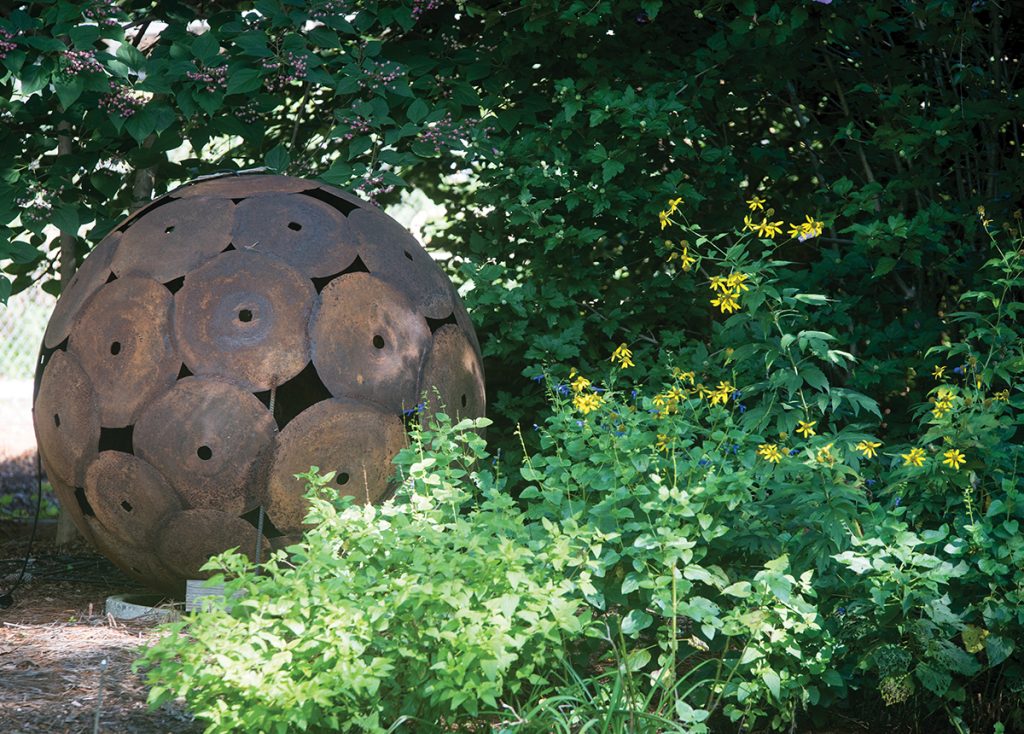
Over the years, Underwood has transitioned to planting more perennials. “Less work for more reward, and it’s a whole lot less expensive than buying annuals every year,” she says. Most everything in her yard has a story behind it — whether it’s a gift from a friend, something she picked along the side of the road, or things that were passed on from her grandmother, aunt or sister. She’s always happy to share stories with guests.
But when it comes down to it, Underwood’s garden is the work of someone who grew up with an instinct for growing plants. “I came off of a farm, and no matter what I’ve done or where I’ve gone, I still come back to those dirt roots,” she says. “My dad sent me to college, he wanted me to do all these great things — which I did — but the dirt is in my blood.”
This article originally appeared in the August issue of WALTER magazine.

